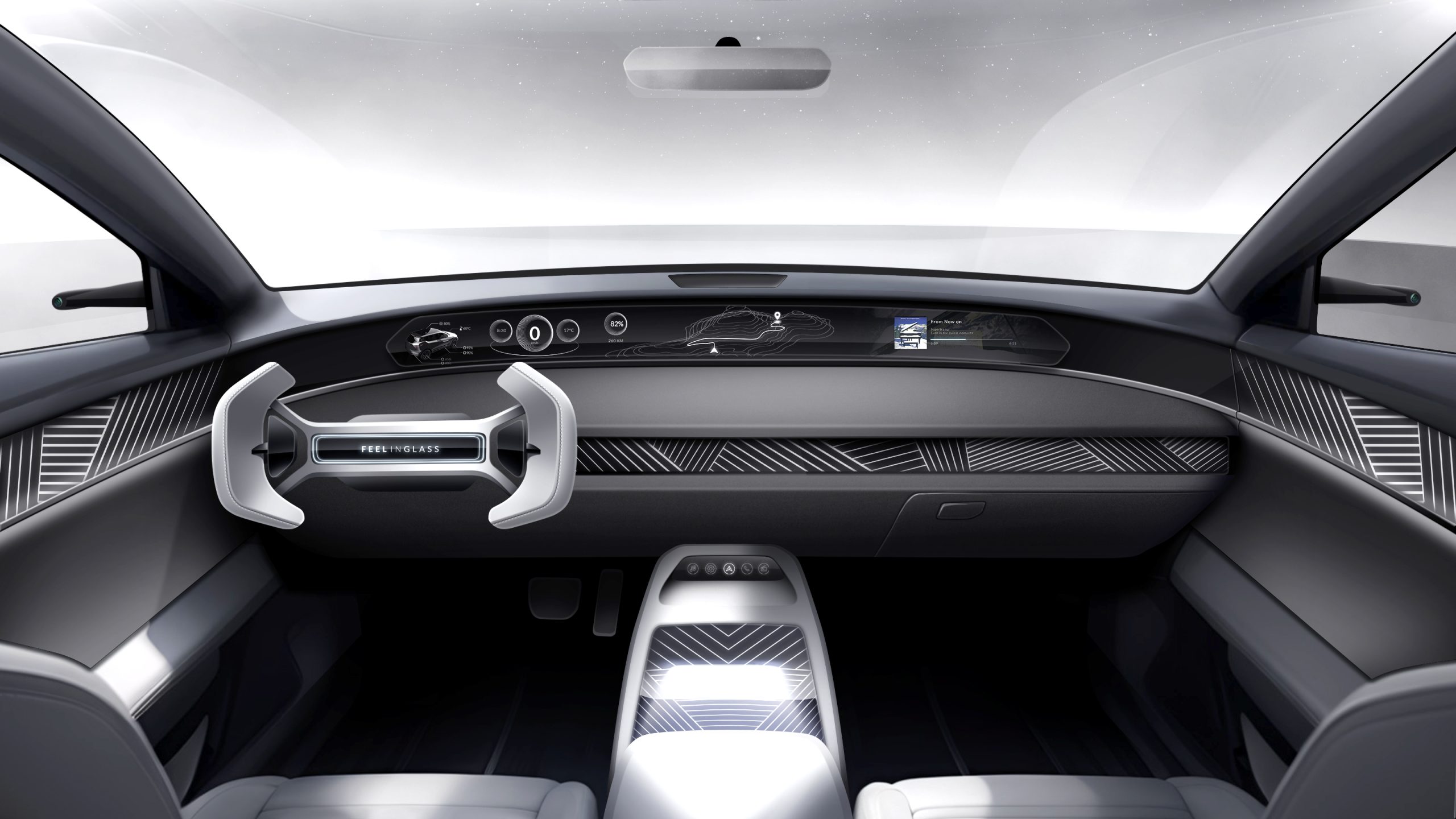Material research and exploratory approaches constantly fuel the way designers and engineers are reflecting about how they can reinvent themselves and create a path towards innovative interiors. More user-centric, personalised and connected, the shift to a house-to-home approach is revamping the way cabins and cockpits are thought.
The need for a HMI sphere providing a tailored experience to drivers and passengers is leading current developments. However, as screens are becoming more prominent than ever within cockpits, that tendency is raising issues in the integration of these larger and more numerous elements. Indeed, screen sizes gain more interest than design features, leading to the integration of soulless wide black panels. While, in specific cases like ICDs, the constraints are tighten by safety regulations, which do not allow much flexibility in terms of design.
Nevertheless, the combination of material and technology is enhancing the overall atmosphere within cockpits, where users need to interact harmoniously with their surroundings. From that standpoint, the seek for the right combination of shade, texture and render is a guideline for designers and has a strong influence on the global aesthetics.
Considering new prominent aspects regarding developments of interior solutions, automotive engineers and designers consider more and more durability and sustainability as a strong added value. The emergence of conscious mindsets out of the car are brought into it brining a differentiated vision. However, plenty of new marketed materials remain derived from plastics, while some traditional ones are not considered due to their alleged lack of adaptability. Glass significantly translates this mindset.
Its role currently remains limited to certain applications like glazing or screen covers. While, at the same time, its range of possibilities as a smart material remains underexploited by most Tier suppliers, who do not necessarily consider it at first glance as a relevant alternative. In order to bring a new vision to automotive designers, FeelInGlass® has developed a wide set of glass-related technologies allowing for harmonious integration of functional technologies, mixing state-to-the-art aesthetic properties.
As FeelInGlass® is moving towards this path, the scope of possibilities is widening. Indeed, solely speaking about decorative attributes, glass has strong potential according to the stack it is capable of handling: screen-printing, lamination, acid-etching or PVD. All these techniques are an entry door to more versatility for glass solutions within interiors as they can expand to several applications, and be shaped according to broader designers’ constraints.
Indeed, as we progress to a more user-centric approach, glass functionalization leads the development of new applications turning it into a smart material. Whether used as decorative trims on a basic and passive form, it can also serve advanced uses like enhanced screen cover for displays, integrated sensors for touch purpose or dynamic technologies related to immersive lighting hidden/on-demand functions.
All this portfolio of applications, mixed with a great flexibility in terms of shape and technology integration brings a breakthrough vision of glass as a versatile material, and the trends it can pioneer for the coming releases on the market.
